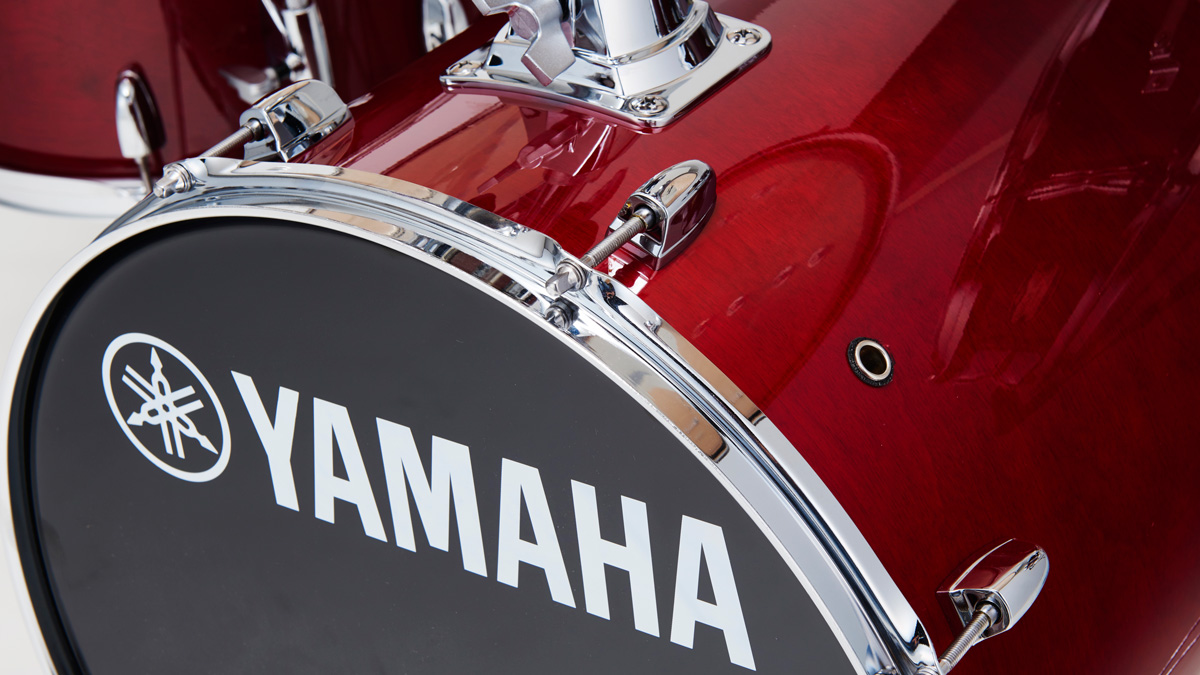MusicRadar Verdict
Yamaha's dedication to building great kits across the board has come through once again. Forget the kids and think of this as a hugely viable second kit for portability, easy set-up and great sounds.
Pros
- +
Portable yet great sounding.
Cons
- -
Very few.
MusicRadar's got your back

Yamaha Manu Katche Junior Kit

Yamaha Manu Katche Junior Kit
If you've had one eye on the trends of the drum market for the last couple of years then one thing is apparent: small kits are, in fact, huge.
It's for good reason, too; gig venues are getting smaller, load-ins don't get any easier and while dropping your bass drum size by a few inches isn't going to necessarily mean 'quieter', the popularity of acoustic-led music means that a bowel-bothering kick sound isn't always called for, so an un-miked 18" or 16" will still do the business, with enough low-end to hand if you do need to mic-up.
Yamaha's Hip Gig has been around for a long time in various guises: the Mellow Yellow of Rick Marotta's original, Al Foster's Jaguar print enlarged 'bop' sized version, and Manu Katché's Junior kit, designed with kids in mind, but by no means limited to minors. It's this that has been overhauled by Manu and Yamaha.
Build
The biggest change to the Junior is the addition of a second rack tom, a suggestion made by Manu to give players access to a small kit without having to compromise the ability to play full drum scores.
"This is not "just a child's kit", despite what your bandmates might say."
The all-birch, six-ply shells are offered as 16"x15" bass drum, 10"x7" and 12"x7" rack toms, a 13"x12" floor tom, and a 12"x5" snare. Yamaha has a reputation for letting quality trickle down from its upper ranges, and it's evident here.
The sturdy hardware and high-gloss lacquer finish punch way above their pay-grade, and as well as the Cranberry Red finish pictured, these drums also come in Deep Violet and Raven Black. You can add additional drums from the Stage Custom Birch range (although these will obviously be badged as such).
Hands On
This is not "just a child's kit", despite what your bandmates might say. This is a decent giggable mid-priced kit that happens to have the word 'Junior' stamped on the badge. It's quick to set-up, even including our out-of-the- box fitting of the heads, and we were able to fit the whole lot on the back seat of our tiny Citroen C1.
Want all the hottest music and gear news, reviews, deals, features and more, direct to your inbox? Sign up here.
Obviously there are plenty of gig bags on the market, but we'd love to see a solution akin to Ludwig's Questlove Breakbeat kits for the Junior. Such bags do offer a bit of protection while transporting them to the practice space, and a big plus-point for a kit this size is that you can move your whole set-up in just a couple of trips to the car.
The bass drum is boosted by Yamaha's included removable riser post. We've used a number of these from Tama, Ludwig, DW and others, and while Yamaha's might not be the slickest to look at, it certainly holds up as one of the best. It attaches to the bottom of the drum in a similar way to a tom post, and once it's in, there's a memory lock to keep things quick. No fussing with the fixings on your pedal, no beater adjustments to find the centre of the drum, and most importantly, it's rock solid.
The Yamaha 250 series batter heads on both sides of the toms combined with the strong fundamental of the all-birch shells make tuning a doddle. It's easy to fall into the mental trap that these kits are for jazz, funk and snappy hip-hop, but nothing else; all high-pitched tunings with overtones and sustained kick notes.
In reality many micro kits can create perfectly useable 'fat' sounds too, and the Junior does both brilliantly.
You can never have enough snares, and we are excited about playing this one. It shares the same impeccable finishing as the rest of the kit, with the throw-off the only giveaway that it's delivered on a budget.
The snare sounds great at lower tunings with dampening, likewise cranking it gives a fairly dry thwack, but the middle of the tuning range is a harder nut to crack, with its powerful ringing overtones.
The bass drum is perhaps our favourite part of this kit. We attach the pre-muffled Yamaha head and tune both sides with about a quarter-turn of tension across the board just to get started. It sounds amazing: low and round, but with plenty of life. None of the plastic tone you sometimes get with low tension, almost like a sample.
The thing that's most impressive is that these characteristics are present throughout the tuning range, and adding tension just increases the '808-ness' of its response. If you've never tried a 16" bass drum, you'll become very aware of your technique very quickly, as burying the beater can kill your sound.

Stuart has been working for guitar publications since 2008, beginning his career as Reviews Editor for Total Guitar before becoming Editor for six years. During this time, he and the team brought the magazine into the modern age with digital editions, a Youtube channel and the Apple chart-bothering Total Guitar Podcast. Stuart has also served as a freelance writer for Guitar World, Guitarist and MusicRadar reviewing hundreds of products spanning everything from acoustic guitars to valve amps, modelers and plugins. When not spouting his opinions on the best new gear, Stuart has been reminded on many occasions that the 'never meet your heroes' rule is entirely wrong, clocking-up interviews with the likes of Eddie Van Halen, Foo Fighters, Green Day and many, many more.